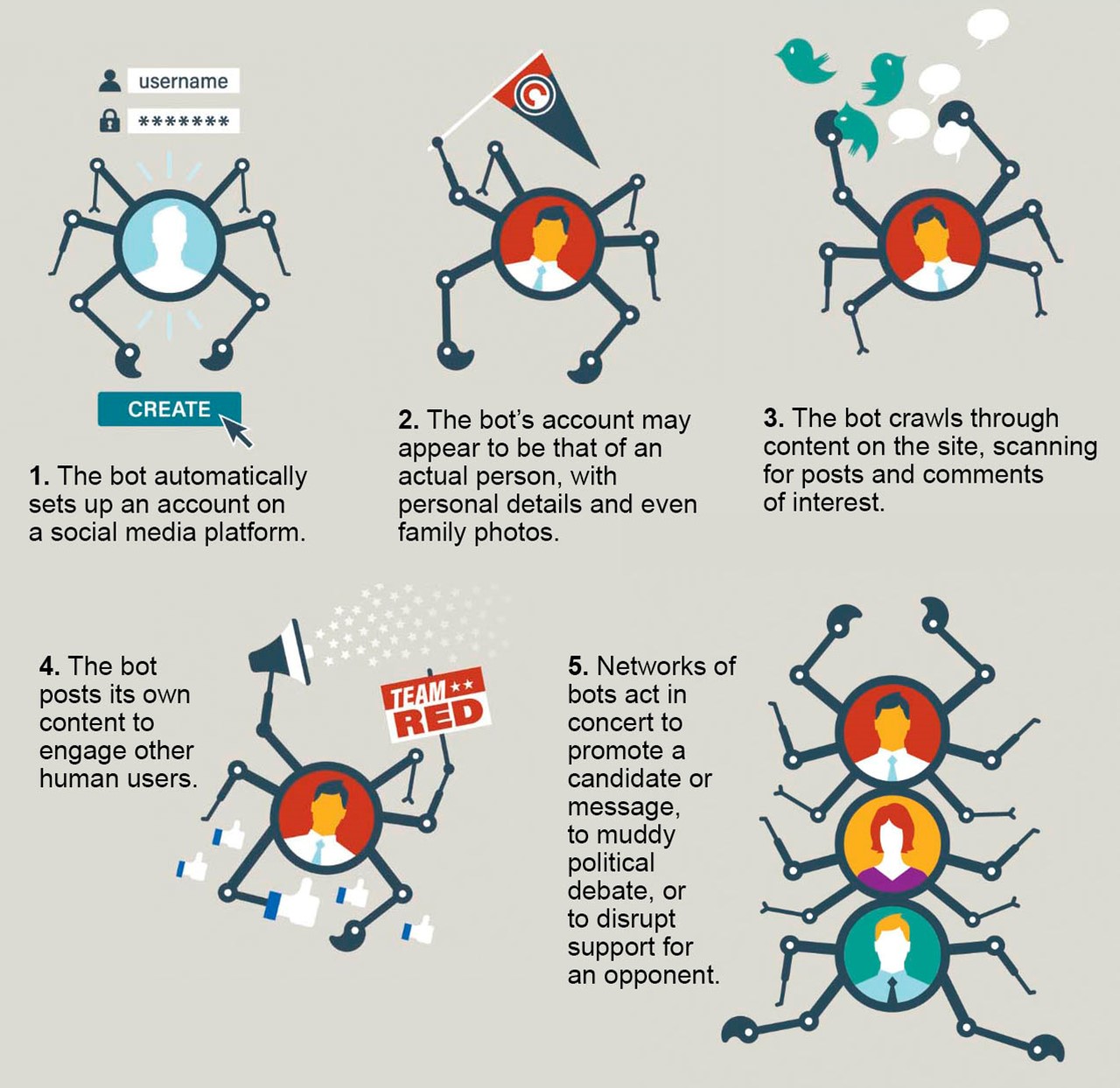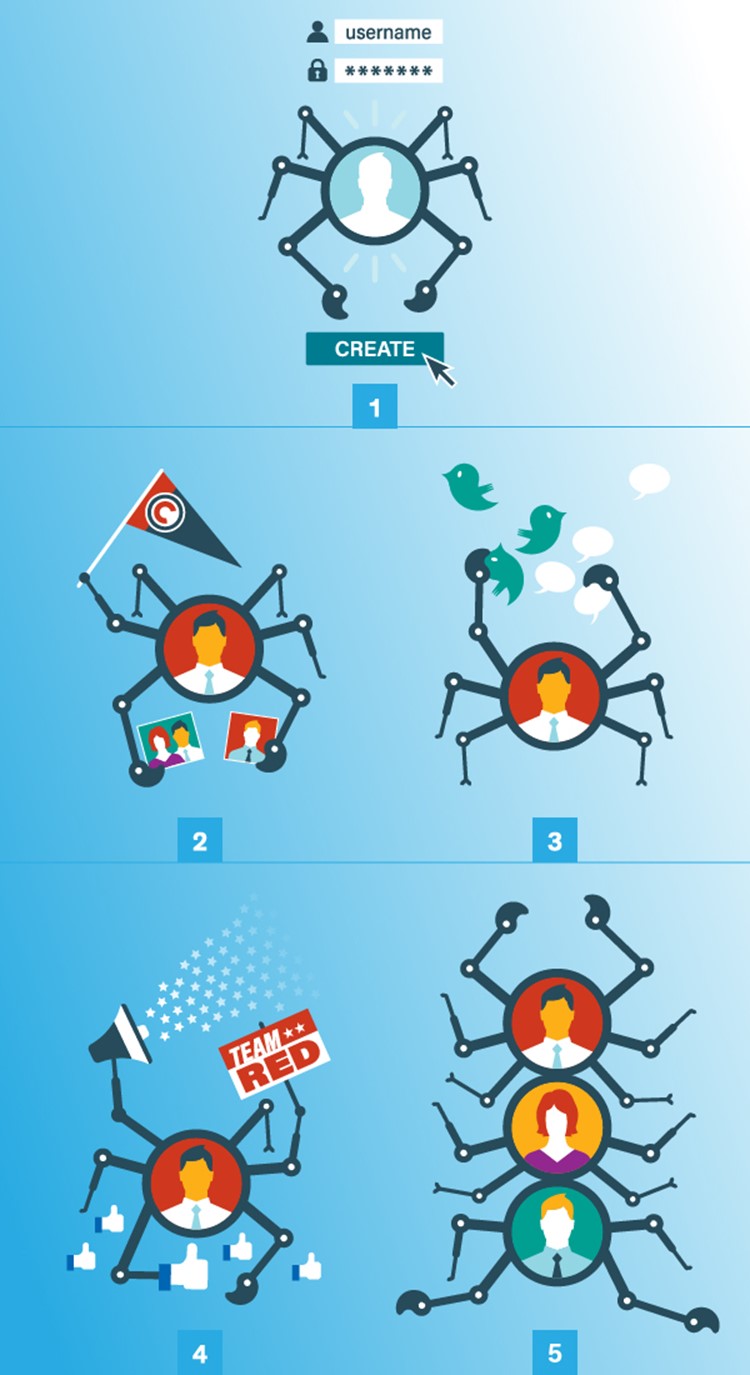
The Tinder election bot sent between 30,000 and 40,000 messages to Labor voters. It targeted 18- to 25-year-olds in constituencies where the Labor candidates were running in tight races. It’s impossible to know precisely how many votes are won through social media campaigns.
The highly automated nature of news feeds also makes it easy for political actors to manipulate those social networks. We’ve seen that political leaders in many young democracies are actively using automation to spread misinformation and junk news. In the U.S., we have found evidence that active-duty military personnel have been targeted with mis-information on national security issues.
The 2016 U.S. presidential election was a watershed moment in the evolution of computational techniques for spreading political propaganda via social networks. What propagandists love about social media is a network structure that’s ripe for abuse. There is nobody to control the production and circulation of content.


Auto175